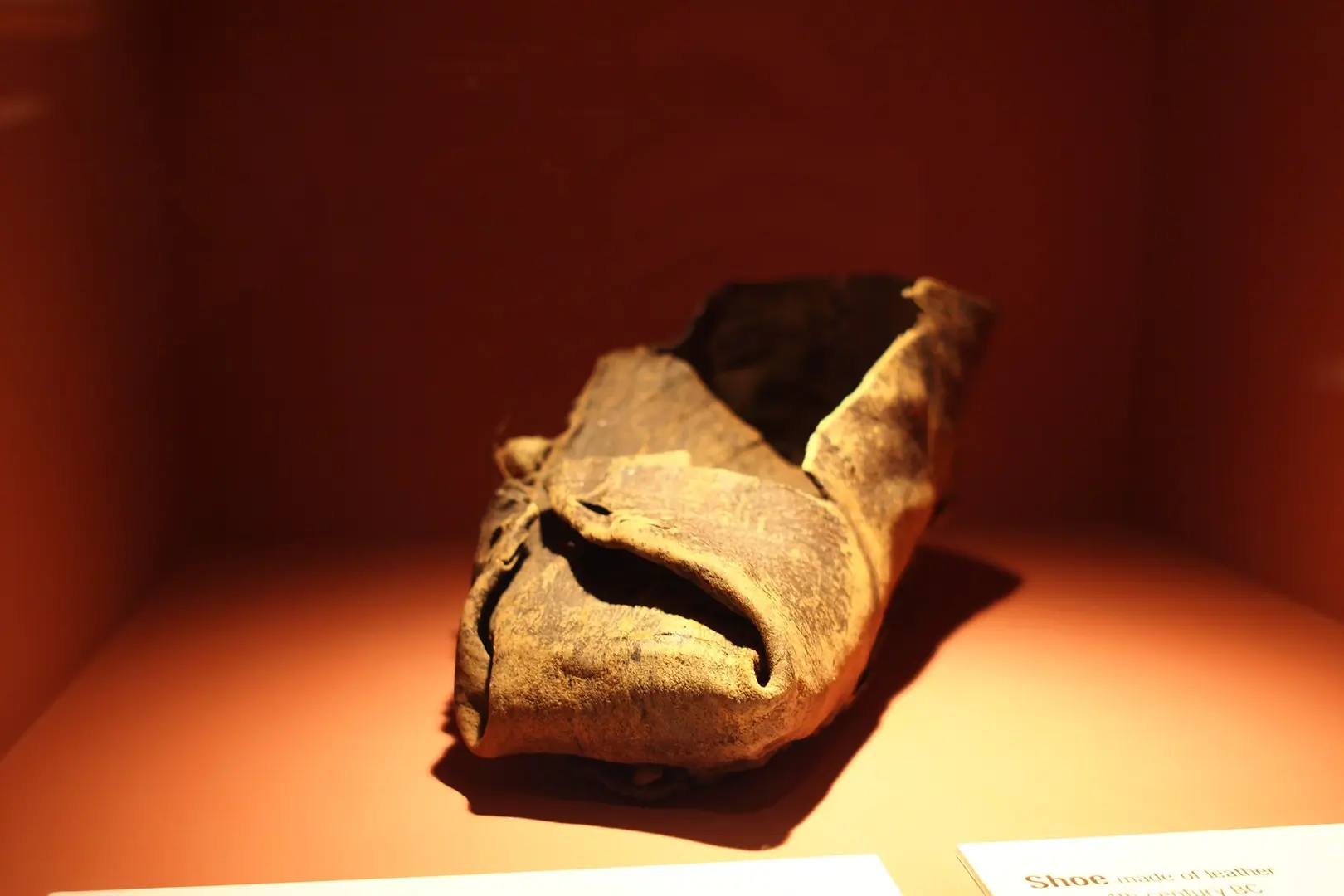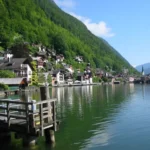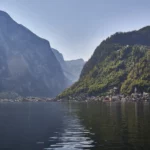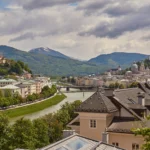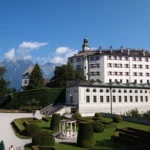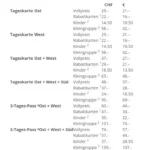Last Updated on 22/04/2023
Hallstatt is not only picturesque place, but also an important place for those who interesting in history. In this post about Hallstatt museum und history, Salt Mines and Hallstatt observation deck.
Hallstatt. Town and lake
Echerntal waterfalls and glacial garden
Around the lake
Dachstein plateau, Dachstein caves,
Gosau
Bad Aussee Lakeside. Lake Grundlsee, Lake Toplitz, Lake Altaussee
The sights of the region on the map are here.
The Salzkammergut map is here.
Hallstatt Museum and History
The museum is small, but interesting and with many screens with films. I tell about the history of Hallstatt, using photos from museum as illustrations.
The museum is located in the very center – next to the ferry and the church.
Most of the finds are stored in the Museum of Natural Sciences in Vienna. But from what was left to them, the museum squeezed the maximum.
Prehistoric era
At first there was a sea – naturally, otherwise where would the salt come from. Calcium rocks, caves and fossils are included.

The earliest human presence in the Hallstatt area is evidenced by bones found in a bear cave dated to around 12,000 BC. This suggests that settlements in this region appeared already in the Neolithic.
This is what the teeth of this cute animal looked like.
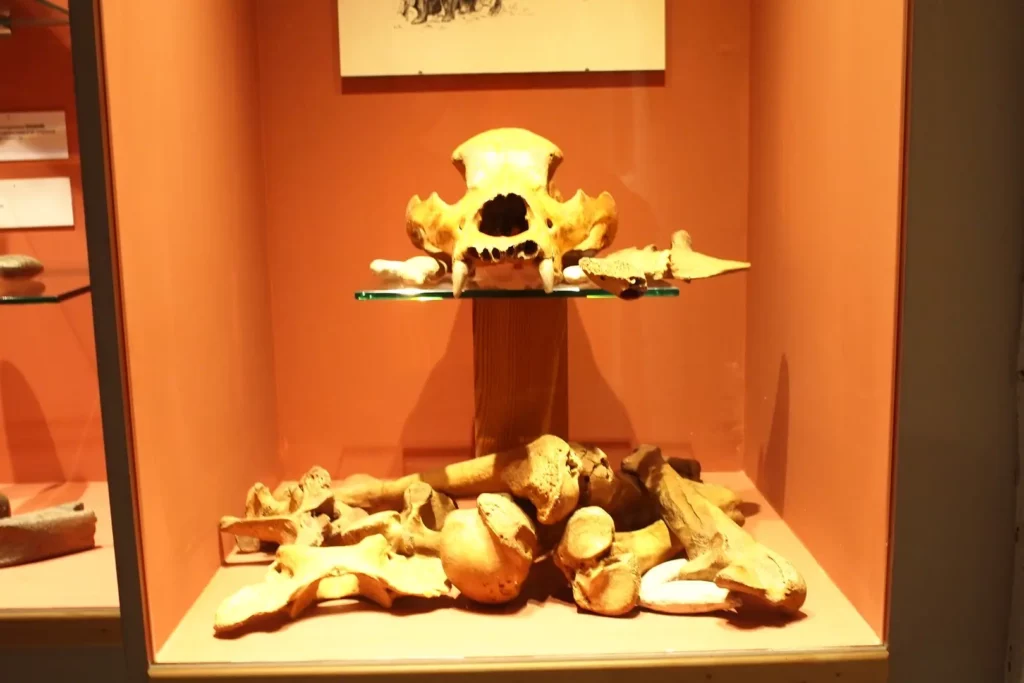
Salt mining in Hallstatt dates back 7,000 years. Ancient people could extract salt with their primitive tools due to the fact that the mountain, at the foot of which the modern Hallstatt sheltered, split and the salt layers were very close to the surface.
It looked like an ancient salt miner.

And his simple tools (14-8 centuries BC).
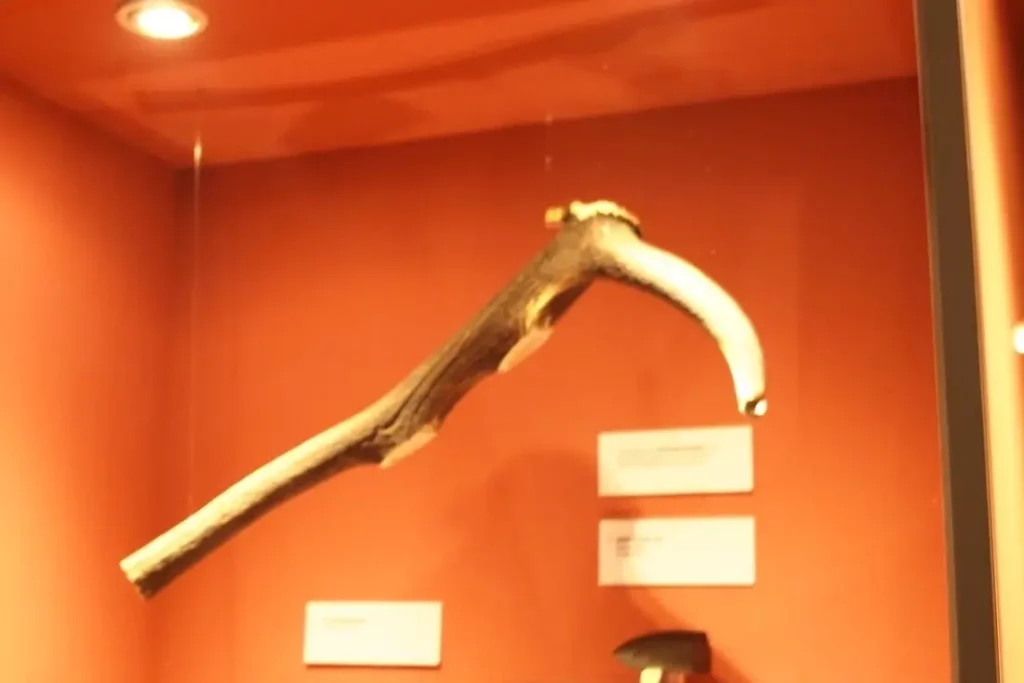
Something harder could be inserted into the spacer.
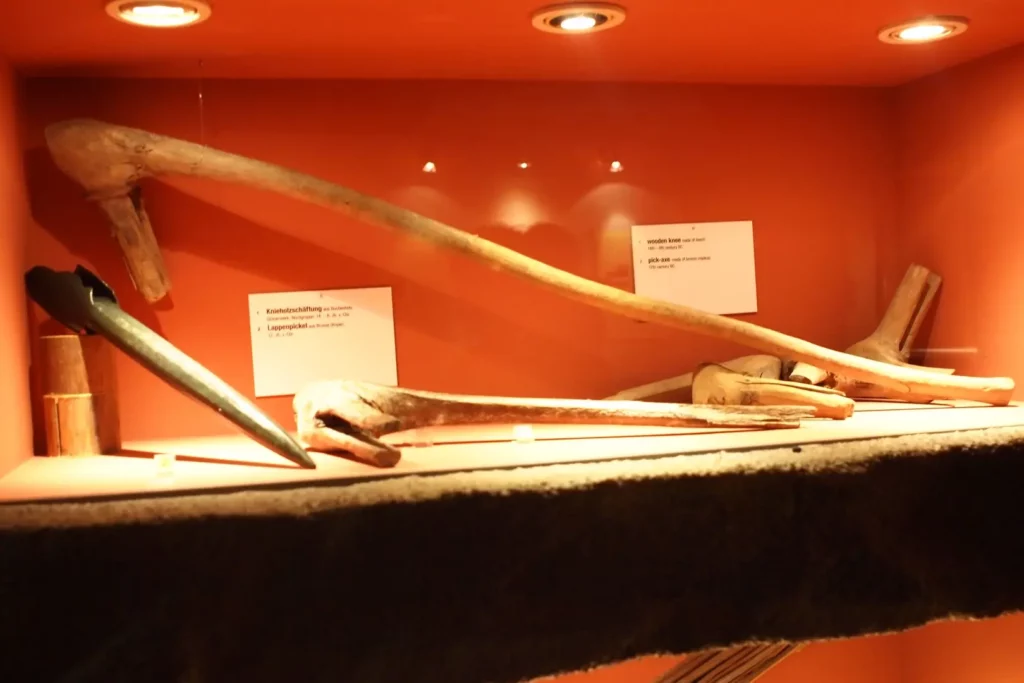
The prehistoric miners invented bags of fur skins and an ingenious system for moving pieces of broken salt.
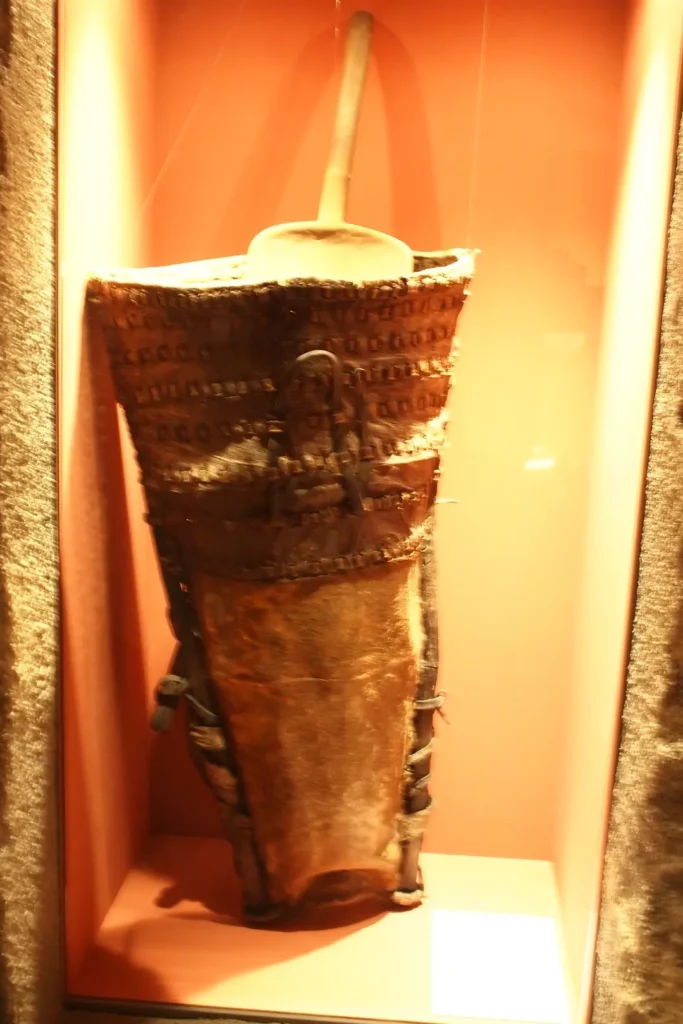
The atmosphere of the salt mine allowed things to be preserved so well. Right down to the toilet paper

I will save you from photographs of what was wiped off – it has also been preserved and exhibited in the museum.
In 2004, the remains of the oldest wooden staircase in the world (14th century BC, Bronze Age) were discovered. The remains lay at a depth of 100 meters. The high concentration of salt in the rocks allowed the staircase to protect itself from the destructive effects of microorganisms for almost 3,500 years.
For reasons unknown, salt mining ceased at the end of the Bronze Age, around 1300 BC. and resumed at the beginning of the Iron Age (800-400 BC). At this time, the Illyrians, people from the East, arrived in Europe. They raised cattle, traded and worked in the mines, and were also remarkable artists, as the objects found in the burials show.
The tools have not changed significantly, only the nozzles have clearly improved.
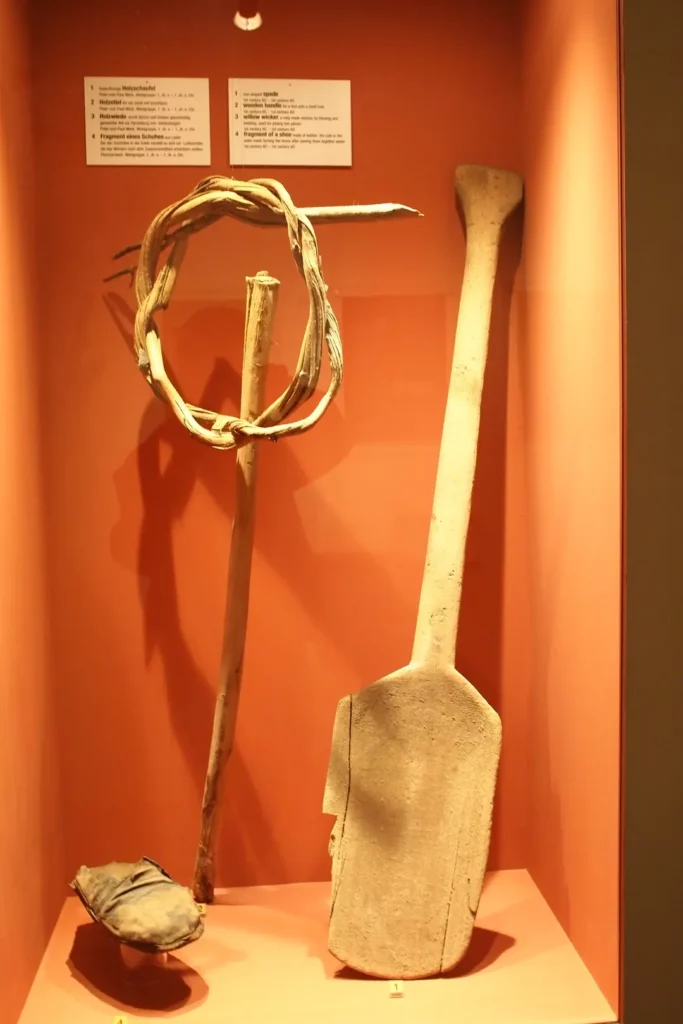
Around 400 BC the Celts captured the settlements of the Illyrians, and they had to fortify themselves in the inaccessible mountains. The kingdom of Norikum was founded – the first state on the territory of Austria.
Trade in “white gold” was very profitable: during excavations, precious objects for burials were found, including amber from the Baltic Sea, glass from Italy, and ivory. Since 1874, the culture of this period has been called “Hallstatt culture“.
Finds from excavations above the city, on the way to the salt mines. In these burials (from the 7th-6th centuries BC) a large number of objects were found, some of them look strange, because they have a ritual purpose
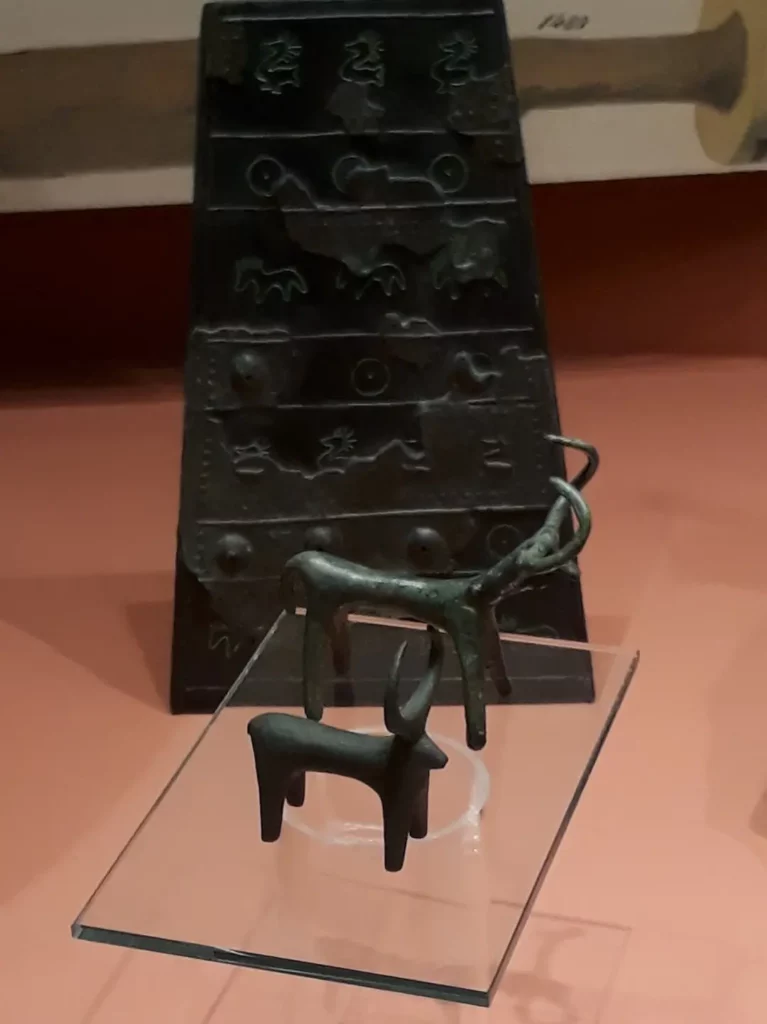
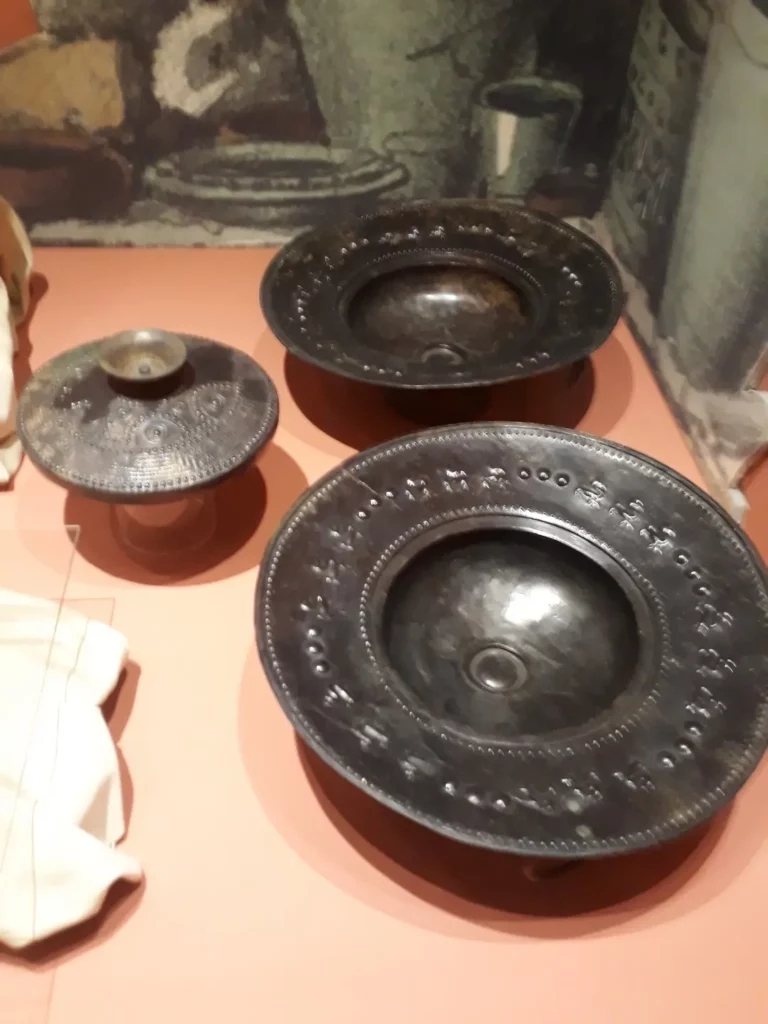

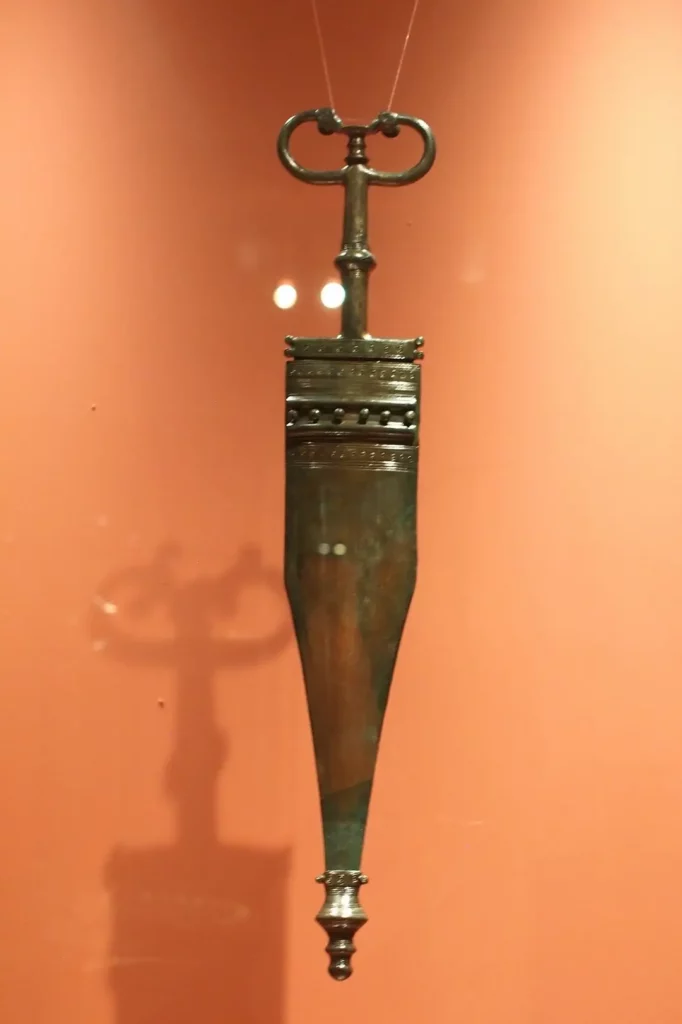

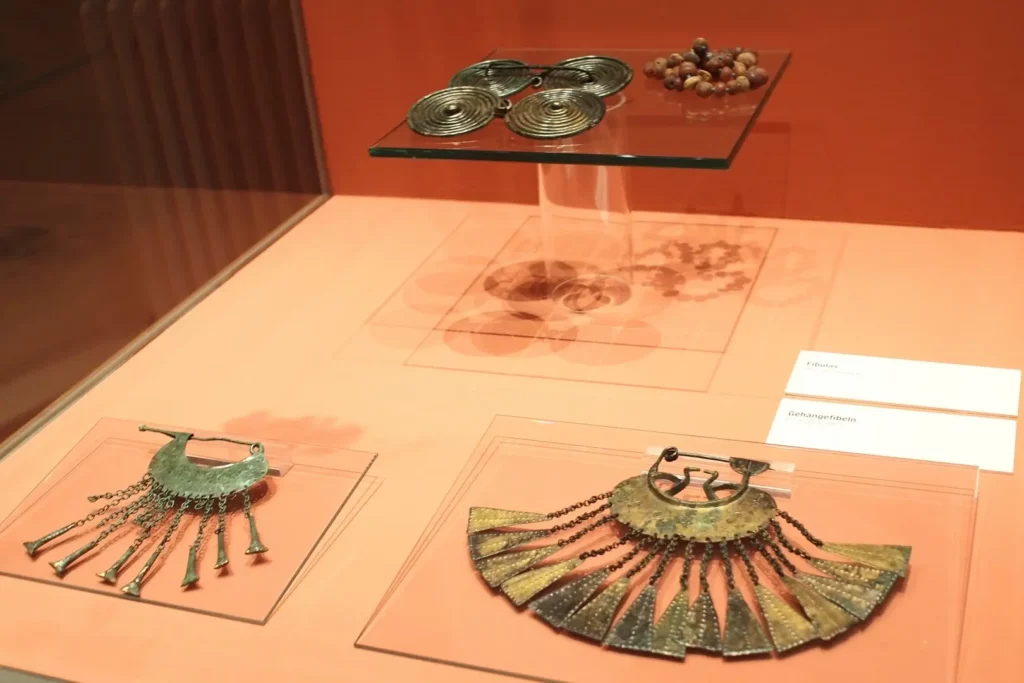
In 303 BC a massive landslide destroyed the settlements and temporarily put an end to the developments under the name “Eastern Group”.
Romans
Around the time of the birth of Christ, Noricum was turned into a Roman province. The Romans built the streets, settled in Hallstatt and, together with the conquered Celts, continued mining during the existence of the Roman Empire.
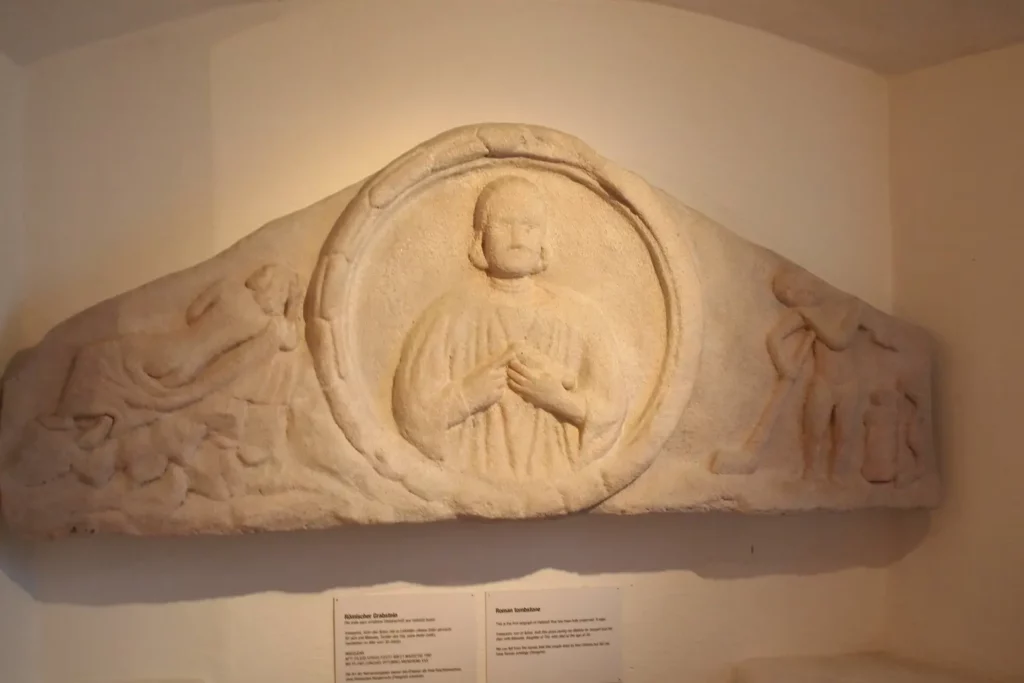

In 300 AD Christians began to spread throughout the Salzkammergut.
The region was taken over by the Bavarians in the 6th century.
In 1000 AD mines have become as important as in prehistoric times and during the Roman Empire.
Church of St. Michael, a small Romanesque church, first mentioned in the 12th century. There are 1200 skulls in the ossuary at the church. Since 1720, a tradition began to decorate skulls with a pattern – a crown of flowers. The last skull was placed in the ossuary in 1995.
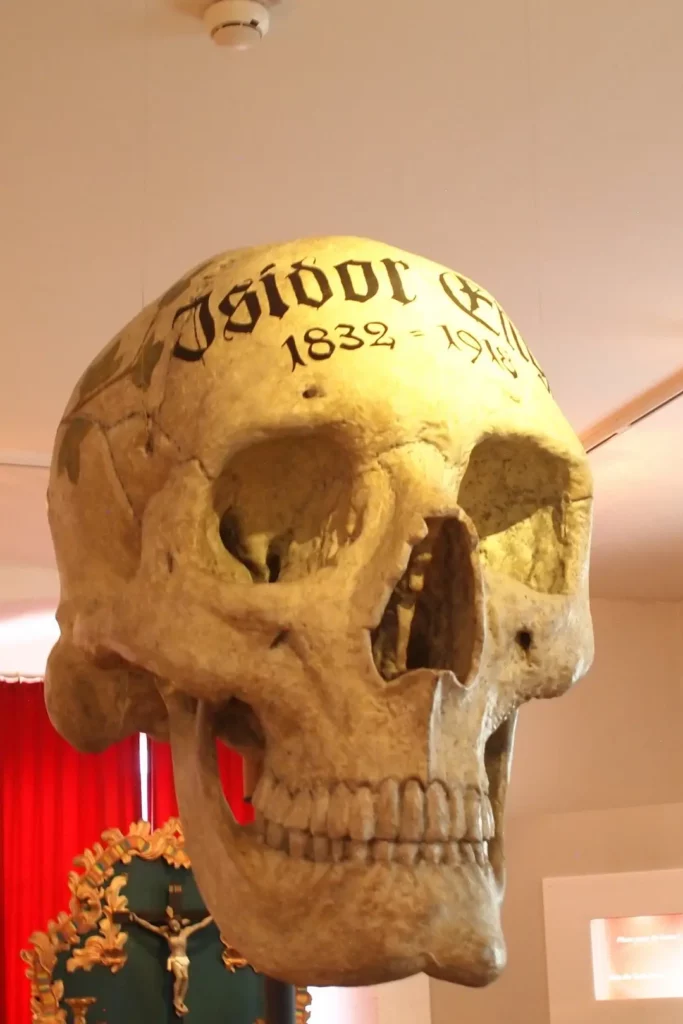
In 1284, Duke Albrecht 1 of Habsburg built an observation tower on Salzberg and named it Rudolfsturm – in honor of his father. It served as a defensive fortification a few years later, during the “salt war” between Albrecht and Archbishop Conrad 4 of Salzburg.
3 years after the assassination of Albrecht, in 1311, his widow Queen Elisabeth granted Hallstatt the rights of a trading city.
In 1494, Emperor Maximilian 1 granted Hallstatt a coat of arms, the right to brew beer and personally came to “see Salzberg” in 1504.
1595 – the oldest pipeline in the world was built. Its length is 40 km from Hallstatt to Ebensee. The difficulty was the exit point of the Gosau gorge to the lake. There it was necessary to lower the salt down to the Gosau Mühle and lift it up again. Then the bridge was built.
This is what Hallstatt looked like in those days – the tower is at the top, the pipeline – Soleleitungsweg – leads from the top of the mine up the slope to the right.
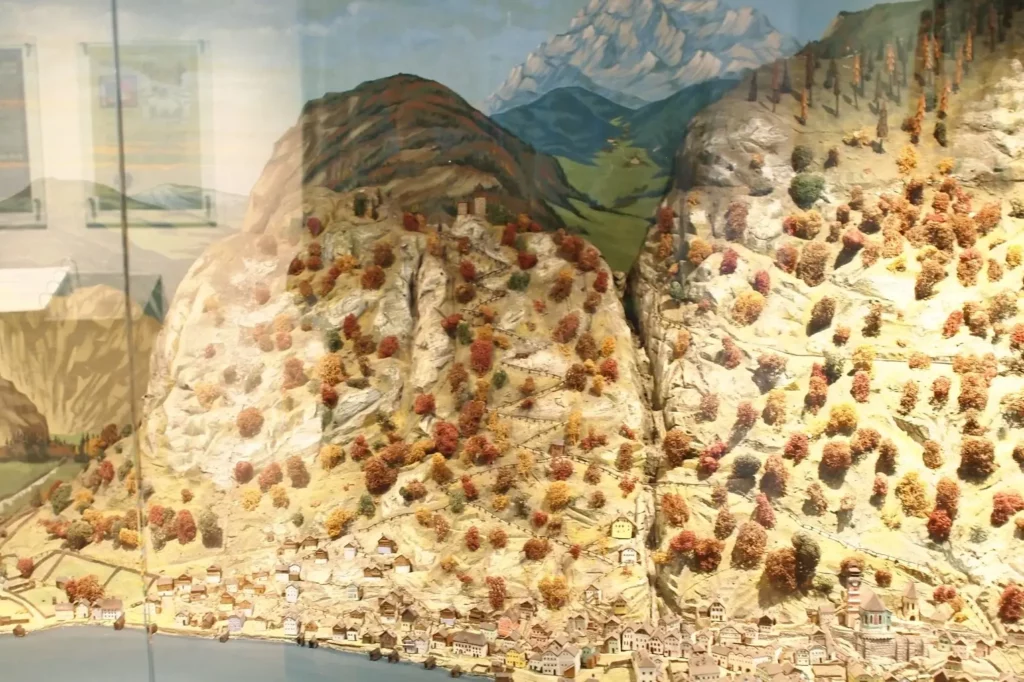
In 1734, the fully preserved body of a prehistoric miner was found. The workers who found him believed that the man died recently and buried him, later it turned out that the man died around 300 BC.
The fire of 1750 destroyed almost the entire city. All administrative buildings were later built in Lahn.
Before the construction of the road in the 19th century Hallstatt could only be reached by horse trail or by boat across the lake. From the end of the 19th century tourists started coming here.

In the museum you will also find a whole room dedicated to money, because the city traded with the whole world.
As well as rooms dedicated to local crafts. First of all, of course, the extraction of salt – you can see how the rock is blown up, what different lamps looked like,
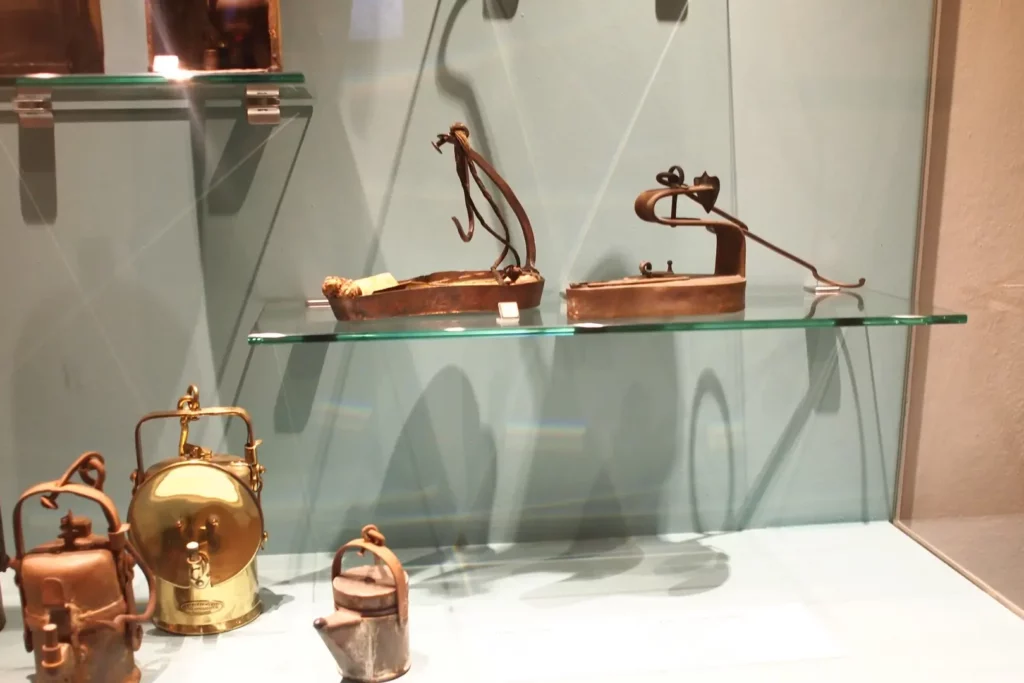
instruments, salt transportation (the profession was called Salzfertiger).
Woodcarving – this can be seen a lot in Bad Aussee.
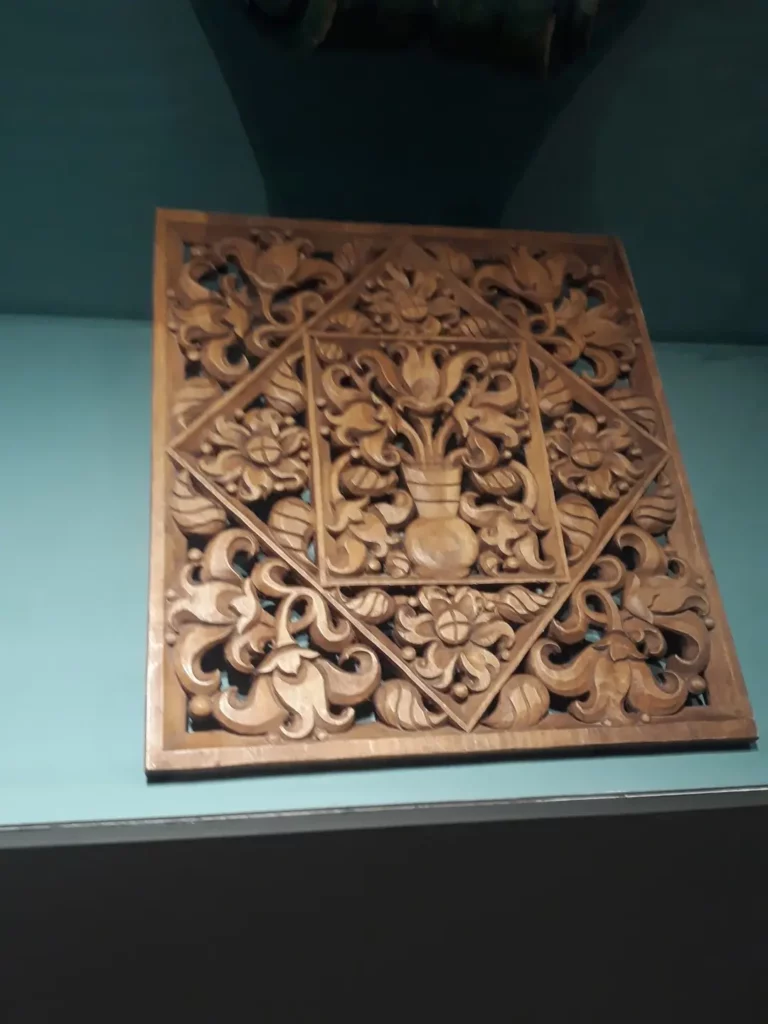
Other historical sites besides the museum
Firstly, in addition to the museum, you can visit the church with the ossuary.
Secondly, in 2002, the owner of the souvenir shop discovered the remains of a Celtic house while working. The shop has been modified to show the remains of walls protected by glass, and items found during excavations are also displayed. An inconspicuous staircase in a sports store still leads to the basement with an exhibition.
Finally, there are guided tours on the excavations (above, on the way to the salt mine). Regular excavations were started in the middle of the 19th century, thanks to the efforts of the scientist Friedrich Simony.
The necropolis in Hallstatt is one of the most significant prehistoric burials. Between 1000 and 500 BC about 4 thousand people were buried here.
Salzberg
Salt mines are located directly above the city. You can get there in different ways.
How to get to Hallstatt salt mines / obseration platform
Salt mines are located directly above the city. You can get there in different ways.
1.The easiest one is to take the funicular. From the ferry to the funicular 10-15 minutes on foot.
2. You can go up also on foot. There are three paths.
- One (approx. 40 min) starts between the tourist information center and the museum. At first, it is a steep staircase upward. Follow the Salzbergweg signpost. The Salt mine sign is the road to the funicular. Further, it becomes an equally steep serpentine.
- More interesting is the Soleleitungweg trail (also 40 minutes). It starts behind the Church of St. Michael (behind the cemetery, from the ferry to the left and up). It is more equipped. And it offers a view of the lake, while the first path looks more like a service road for miners.
The Soleleitungweg trail leads along the world’s oldest pipeline. The saline solution from the caves is transported 40 km to the Ebensee fabric. Information boards along the trail tell about salt mining.
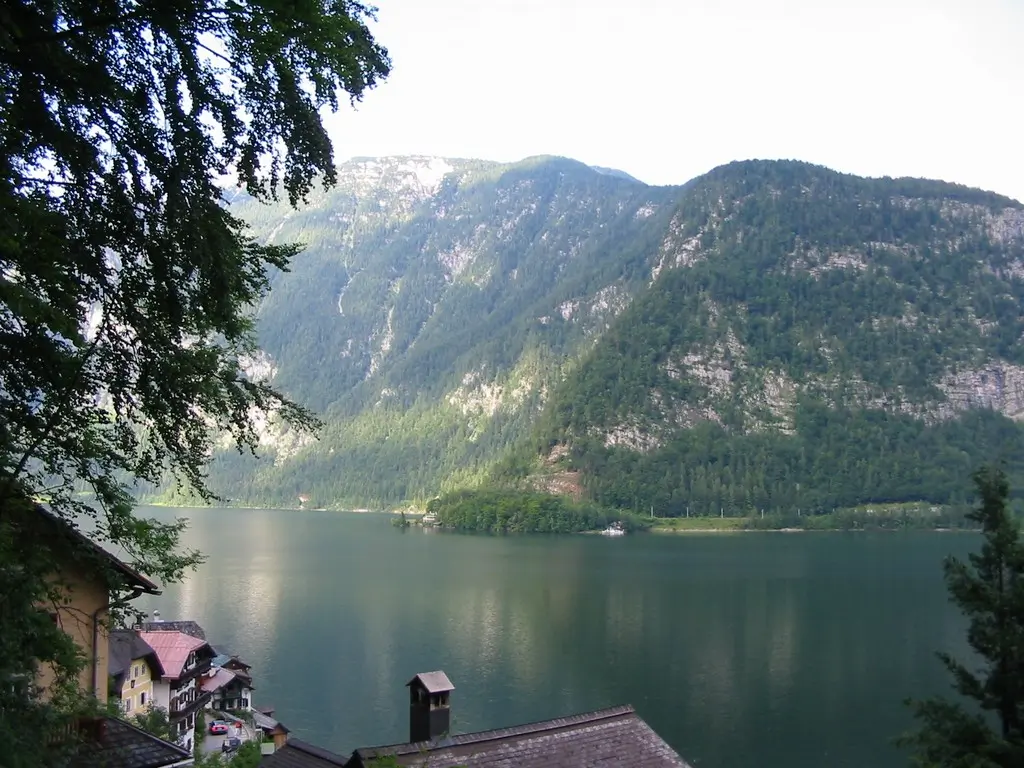

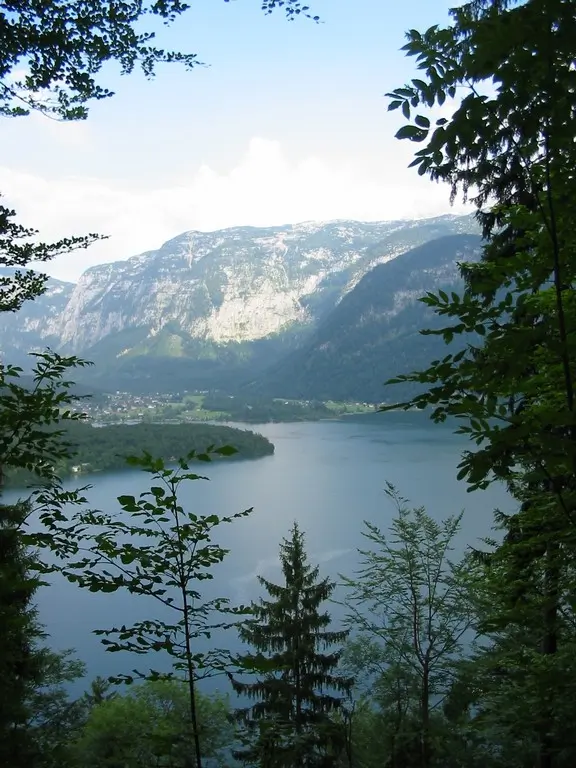

Both trails lead to the upper funicular station and the Rudolfsturm tower. From the funicular to the mines, you need to walk another 15-20 minutes.
If you decide to go down. The first path starts to the right of the tower. And the second – to the left (steps down, overgrown with grass).
But it can be now a little different, since the new observation platform was built.
From the observation deck, the views are even more stunning as it hangs over the city.
- The third trail (one and a half or two hours) goes through Lahn and Echerntal gorge. Above it starts from the mine and goes first up, then turns left, descends near waterfalls and leads through Lahn to the funicular. You can add the gorge tour to the mine tour if you turn off the road at Gletschergarten.
Read about waterfalls in part 3.
New Hallstatt observation deck
The observation deck improved the views. The city itself became visible, and not just the lake.
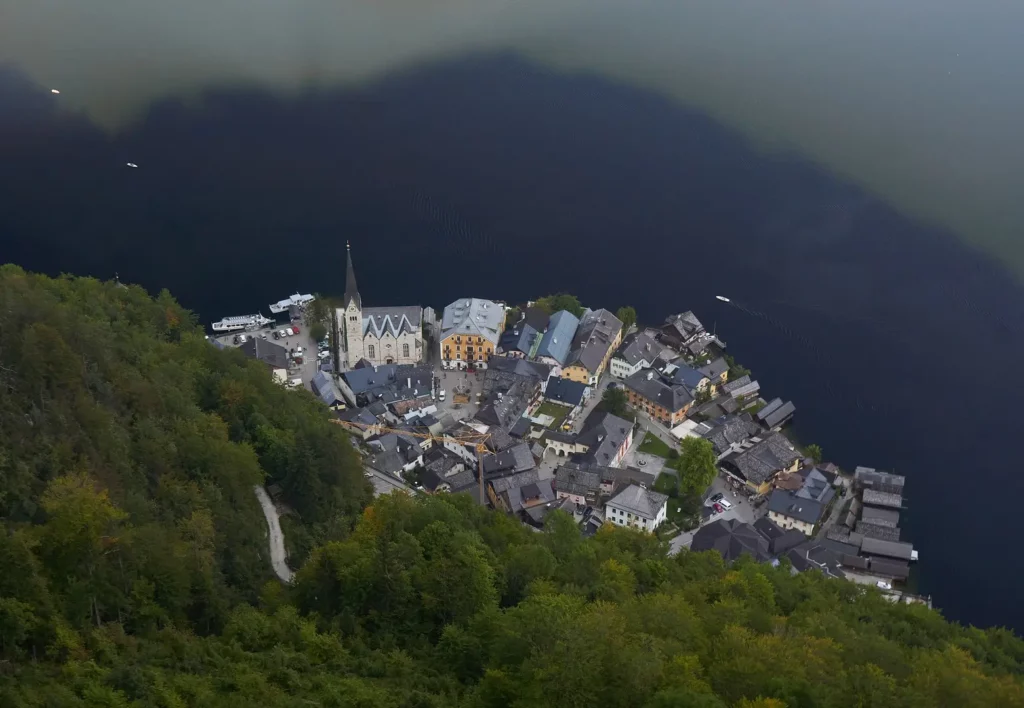
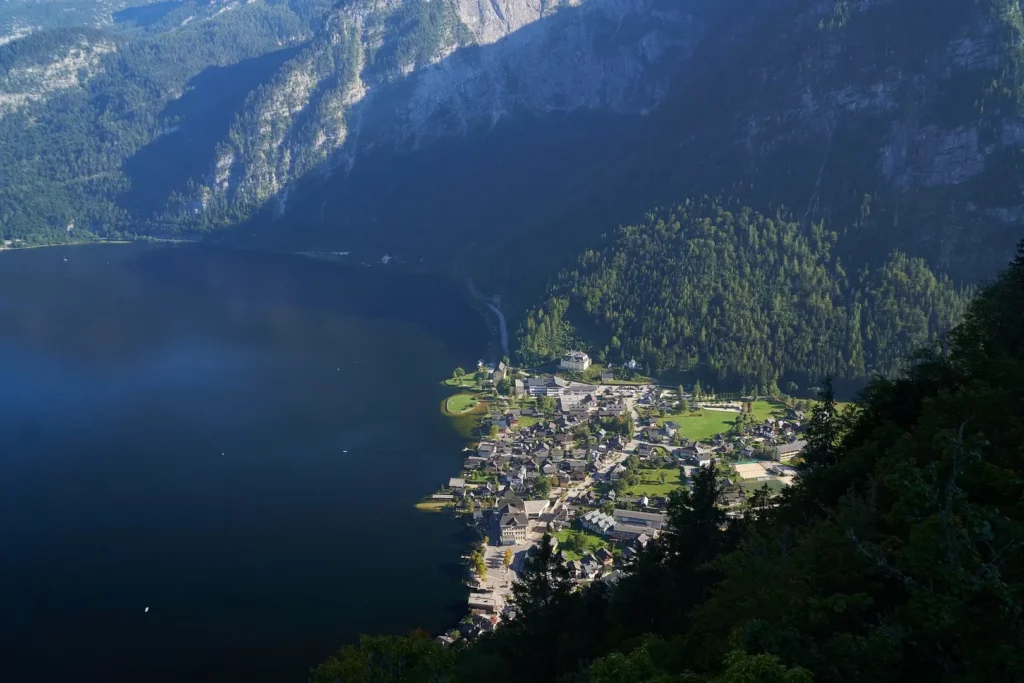

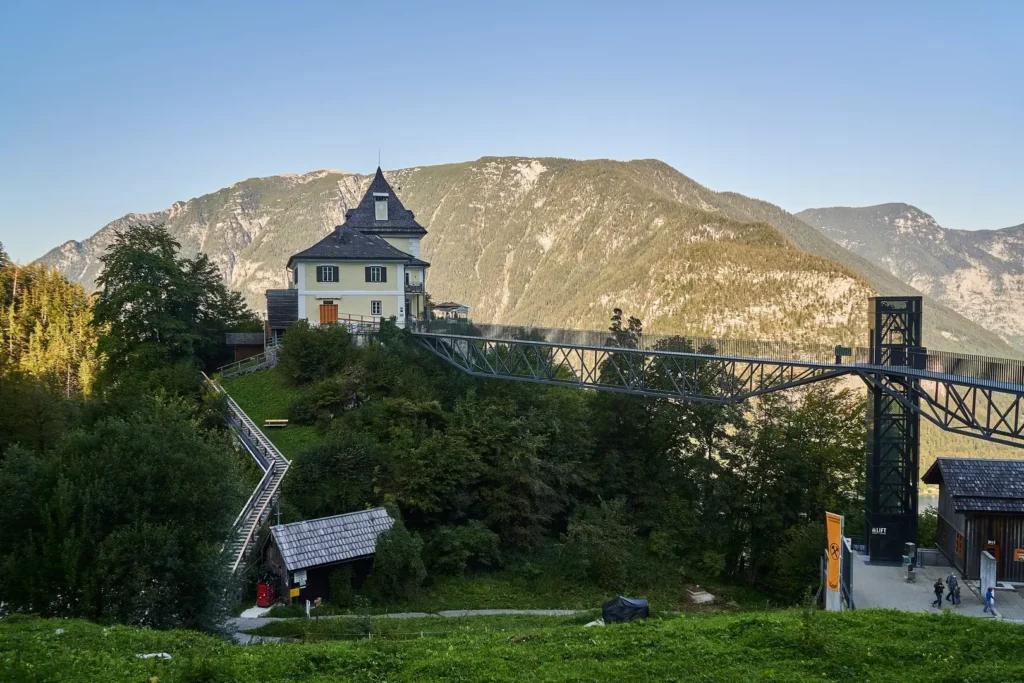
Hallstatt Salt mine
Hallstatt Salt Mine is the oldest salt mine in the world. Salt mines are interesting entertainment.
You are given overalls, twice allowed to go down the wooden “logs”. I don’t know what is the correct name for these things, which miners used to quickly go downstairs. Going down is not at all scary, but if you are afraid, then you can go down the stairs. The second time you descend 60 m (the longest descent in the mines of Austria) and you are photographed. Below they show on the screen how fast you were sliding.
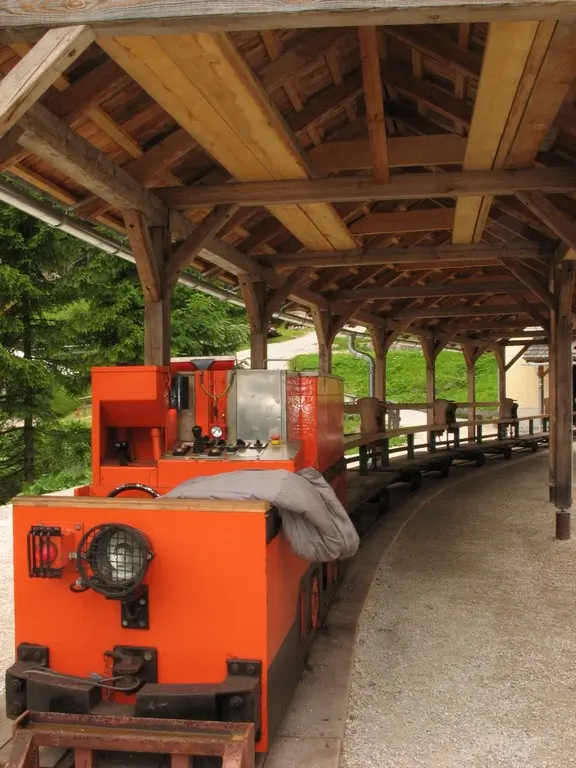
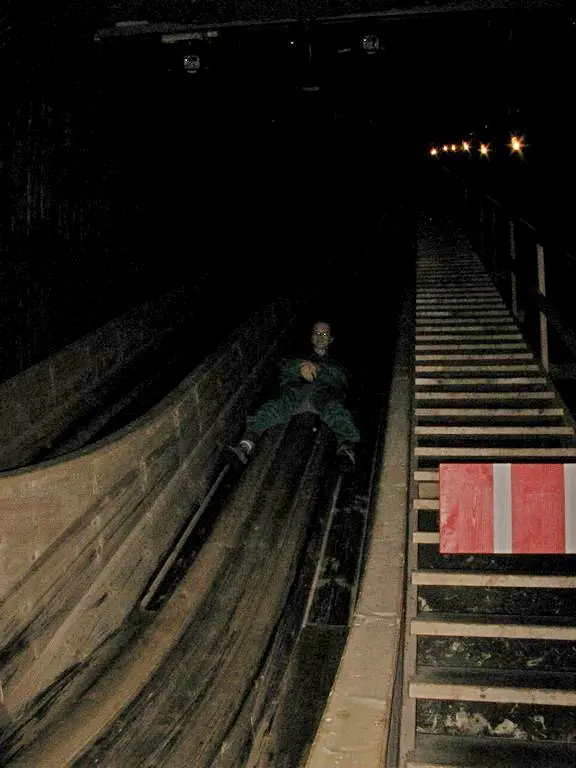
Follow me
The tour is conducted in German and English. They show small films about how the salt layers appeared, how the first salt mining began in the 5th millennium BC and how mining methods have changed. At the end, they take it outside on a small train with benches along a narrow tunnel where salt used to be exported.
It’s not warm at all in the mines (+ 3 … + 6) and a sweater would be welcome.
The region’s second salt mine is located in neighboring Bad Aussee. Read about it in the other topic. The third is not far from Salzburg. It has recently reopened after renovations.
Next – Echerntal
Around the lake
Dachstein plateau, Dachstein caves,
Gosau
Bad Aussee
The sights of the region on the map are here.
The Salzkammergut map is here.
Do you enjoy the site without cookies? This means that I work for you at my own expense.
Perhaps you would like to support my work here.
Or change your cookie settings here. I don’t use personalized ads

